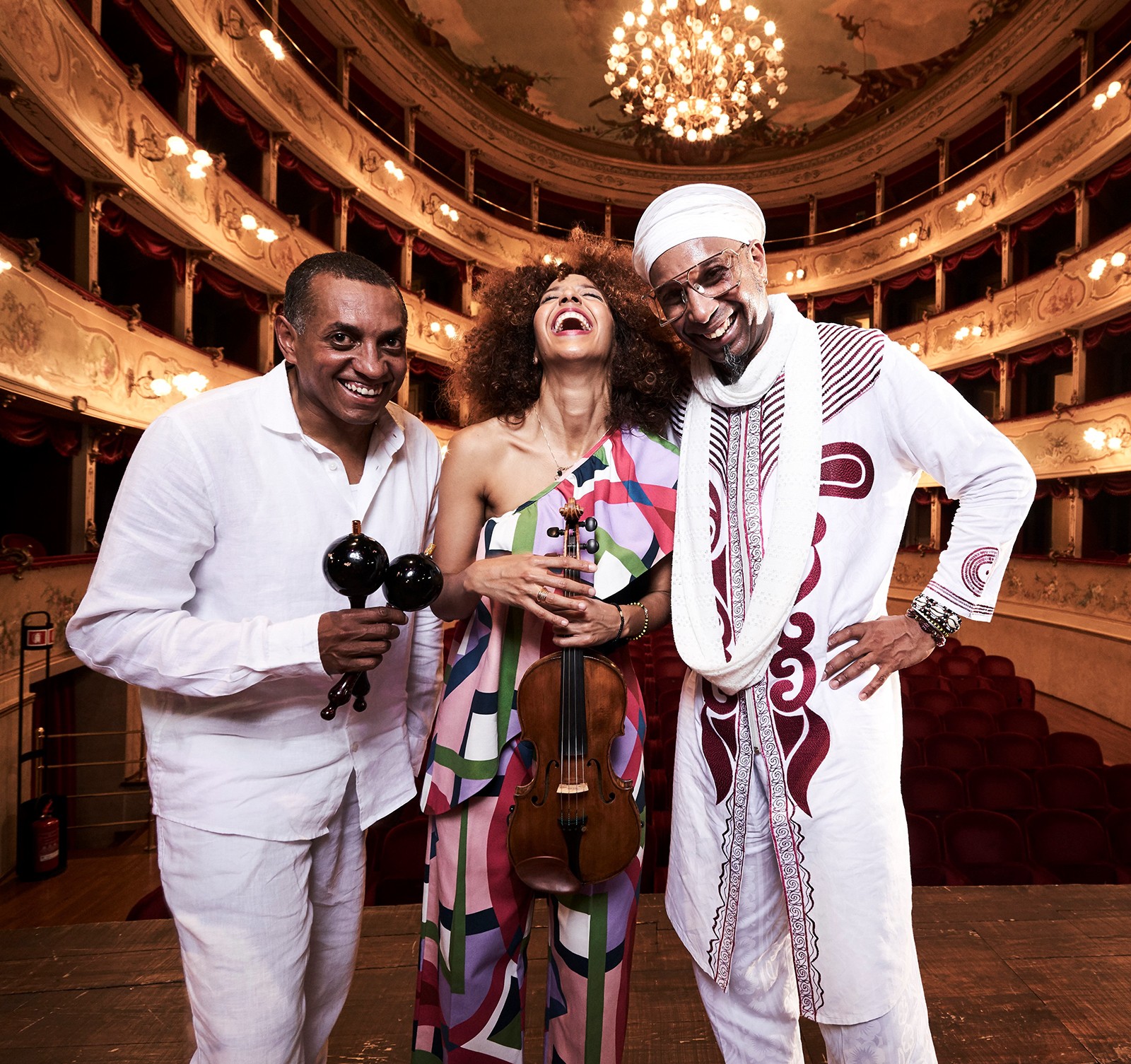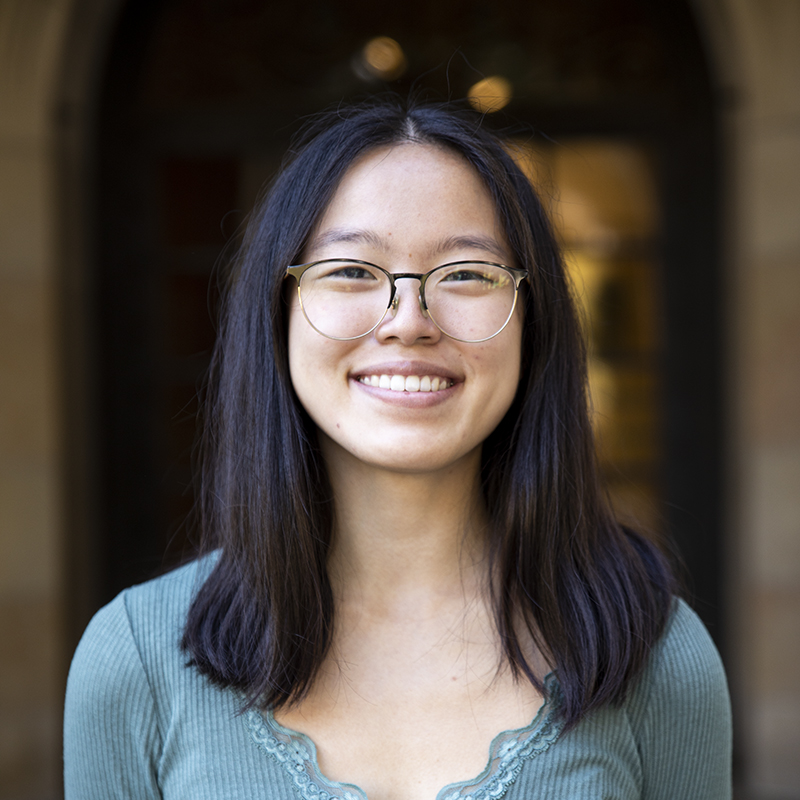Musical trio blends Afro-Cuban roots with classical sounds, explores theme of water

Omar Sosa and Yilian Cañizares make up Aguas Trio, and will be performing as part of an event by UCLA’s Center for the Art of Performance on Friday, featuring percussionist Gustavo Ovalles. The band combines its Afro-Cuban roots with Western classical music as they contemplate the importance of water. (Courtesy of CAP UCLA)
"Aguas Trio"
Friday, 8 p.m.
Royce Hall
Prices vary

By Vivian Xu
Feb. 25, 2020 9:47 p.m.
For the Aguas Trio, water is the air they breathe.
On Friday, the group will be playing selections from its album, “Aguas,” in a performance presented by UCLA’s Center for the Art of Performance at Royce Hall. The trio consists of Cuban pianist Omar Sosa, Cuban violinist-vocalist Yilian Cañizares and features percussionist Gustavo Ovalles. Their music blends together the feminine sounds of the musicians’ Afro-Cuban roots and Western classical music while infusing their appreciation for water, Sosa said.
“We went to my house in Mallorca, in the Mediterranean Sea, and we started to live in the moment to create a human and spiritual energetic vibe,” Sosa said. “Every day when we woke up, the first thing we saw in front of our face was the sea. Based on that, we connected with Cuban traditions, (especially with) Oshun, the goddess of the river.”
[Related: Afro-Cuban band incorporates intercontinental sounds to inspire free-flowing dance]
Traditions and musical roots – especially the artists’ Afro-Cuban heritage – are critical to combining the sounds found in the Aguas Trio’s music, Sosa said. In several songs, Cañizares sings in Yoruba, a language native to West Africa that was brought to Cuba through the slave trade. And instrumentally, Sosa said drumming is a critical component of Afro-Cuban music tradition and is featured in many of their songs.
Since their Afro-Cuban roots act as their music’s foundation, Cañizares said she and Sosa experimented sonically by adding classical Western sounds in a method very similar to the exploratory nature of jazz improvisation. Cañizares uses her violin, a Western instrument, to mix in European classical sounds. On top of that, Sosa said he uses the piano in the traditional way, which supports the lead instrument, but also uses it unconventionally as a percussive instrument by striking chords to keep tempo.
When mixing the various sounds and influences, Sosa said the process was similar to seasoning a dish, where pinches of certain instruments and musical traditions were added liberally. The pair did not think methodically about how much to pull from each tradition, Cañizares said, which resulted in a much less structured and fluid sound.
“We believe music has no boundaries,” Cañizares said. “We never asked ourselves, ‘Oh, should I put in some of this (musical tradition)?’ We just tried to be very flexible and very open to whatever we think is useful to deliver our message, whatever we think is beautiful to us.”
The flexible composition of their music yields a distinct and lush sound, said Marco Melchior, the Aguas Trio’s sound engineer. Rather than staying strictly within the realm of acoustic or electronic music, the group fuses both together by occasionally using the electric keyboard or electronically processing the percussion’s sounds with an iPad during performances, Melchior said. The trio’s music is characterized by the element of surprise, Melchior said, because although listeners are able to recognize the sounds of certain instruments, they may not know what instrument to expect next.
Regardless of the aural surprises in their songs, Cañizares said a consistent theme in Aguas Trio’s music is the desire to showcase Cuban music’s feminine side. Loud trumpets and drums usually characterize the style, Sosa said, but the group aims to display a gentler sound. To do so, Cañizares said their minimalistic set – consisting of only a piano, a violin and percussion – is softer in sound, so it exhibits the feminine and subtle energy their music exudes.
“Cuban music can be so (masculine) – it’s full of testosterone,” Cañizares said. “But also inside of it is a beautiful feminine part. She’s powerful, yet fragile. … We want to bring out this part – this feminine part – that people know less (about).”
[Related: UCLA Ethnomusicology Archive strikes celebratory note with reopening concert]
Their ultimate aim with their music is rooted in the group’s very name: water. To Cañizares and Sosa, the significance of water in human life is much more than a simple necessity for survival. Cañizares said humans come from water, and therefore, it is intertwined with humanity’s existence. By using their album and tour as a platform, Sosa said the group seeks to advocate for water conservation and protection.
Not only does Aguas Trio end all of its performances with a plea to acknowledge the importance of water, but Cañizares also said its music focuses upon the element’s tender and calm qualities. In Cuban Santerían tradition, water is associated with the goddess of the rivers, Oshun. Her nurturing and sweet nature is ultimately what their music seeks to embody, Sosa said. By removing the aggressive aspects of Cuban music from their songs, Cañizares said the group was able to reach a source of femininity.
“We believe that nowadays, the world needs sweetness, we need understanding, we need fluidity,” Cañizares said. “We go to the central part of this energy (in our music), which is love. I think that people can feel that.”


